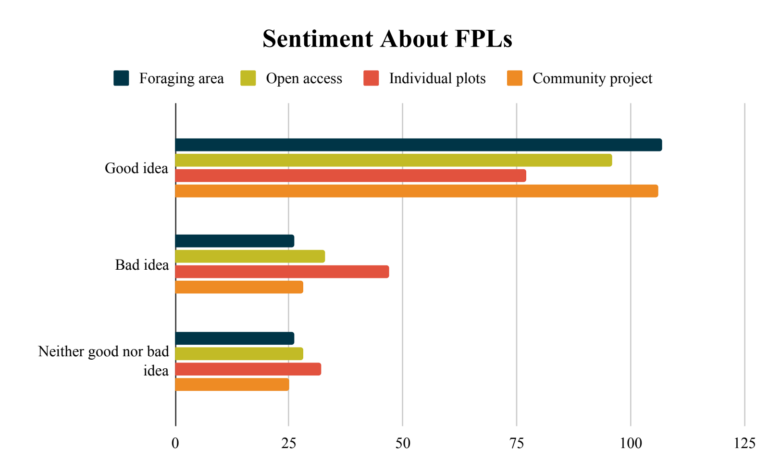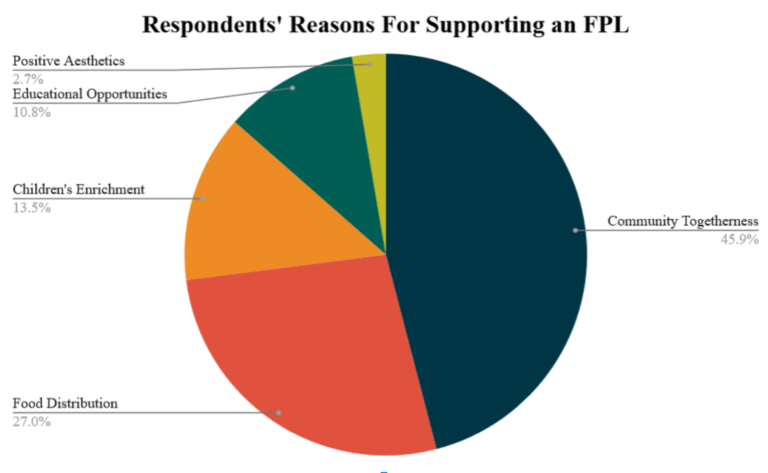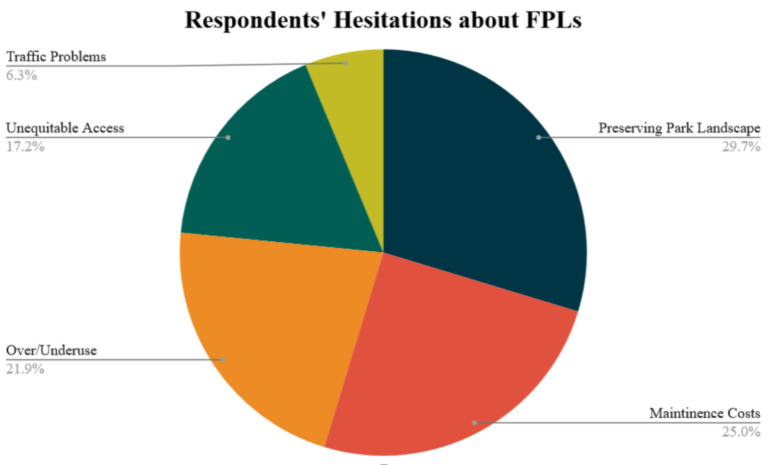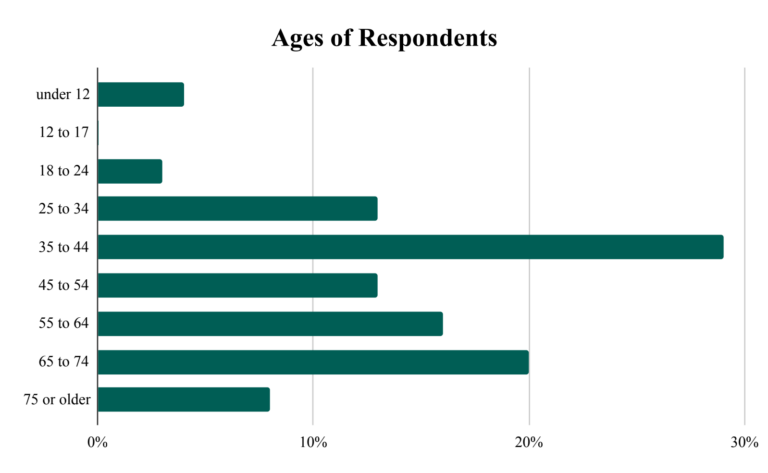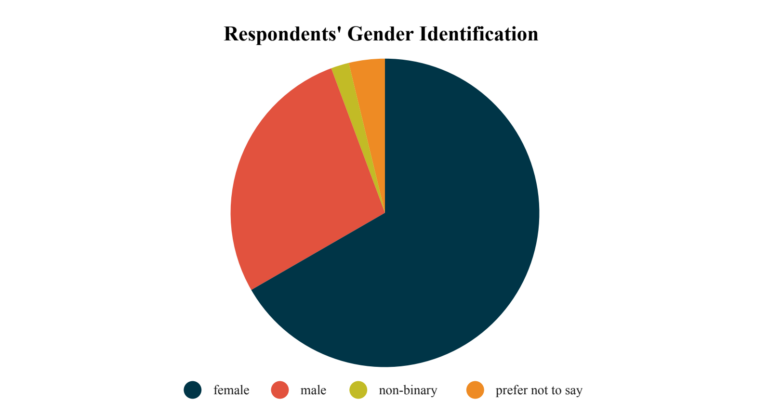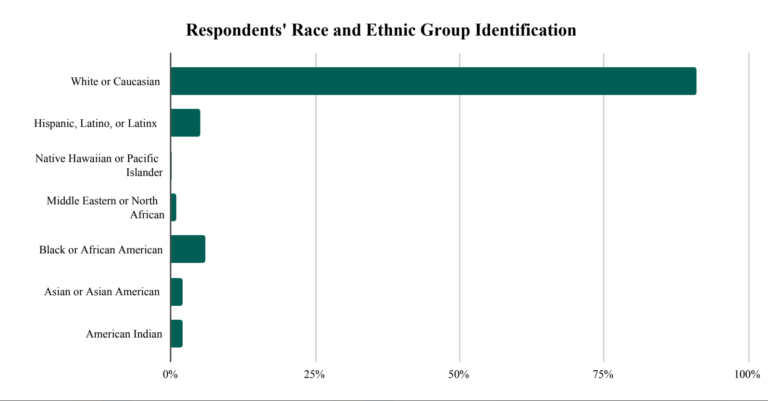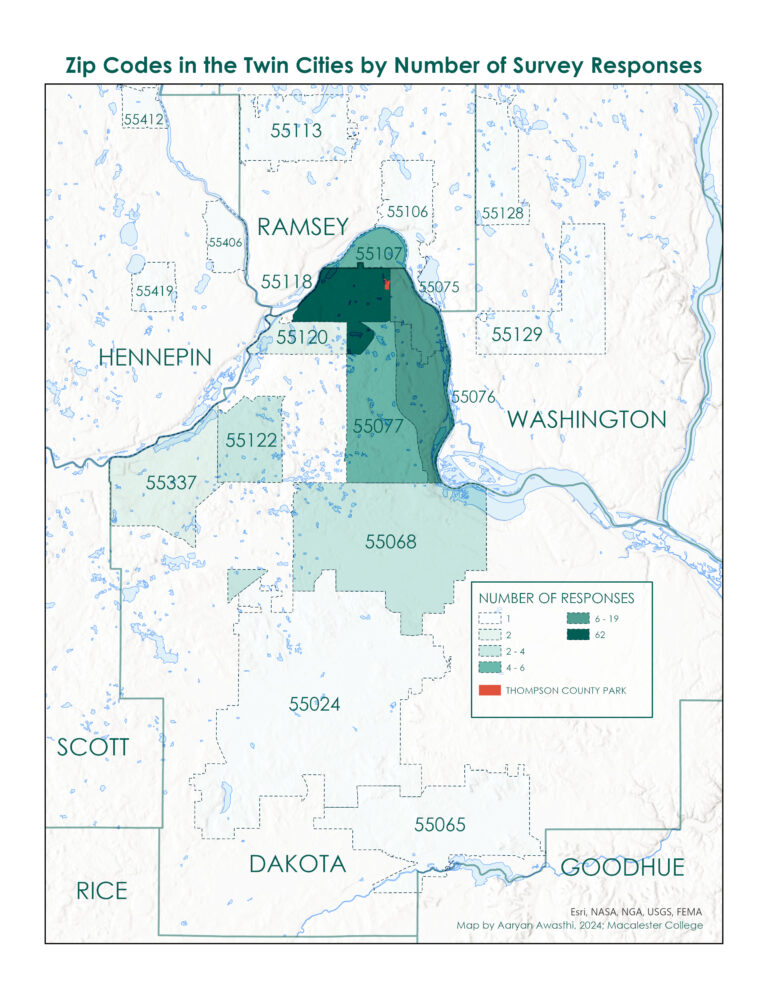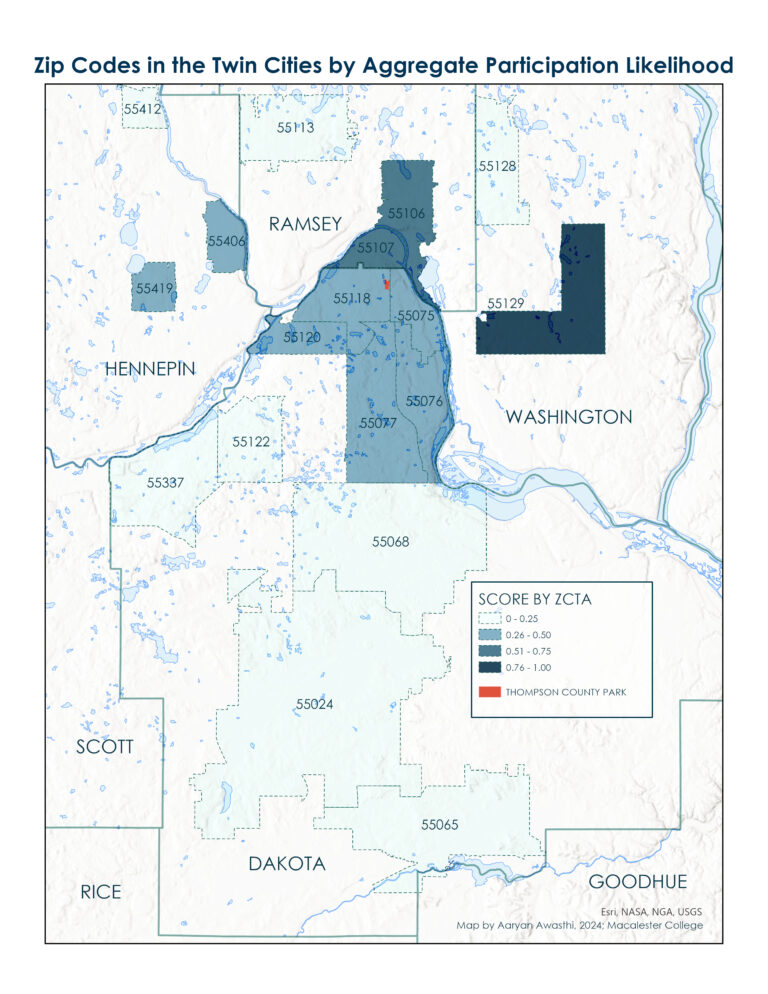Key Takeaways:
Of the 163 respondents to our survey, a plurality indicated interest in introducing a food productive landscape (FPL) to Thompson County Park. The most popular type of FPL was the foraging model, with the least popular being the individual plots model.
In all instances, a slim to moderate majority of survey respondents indicated that they would be unlikely to utilize an FPL if it were added to Thompson County Park.
Respondents who generally supported the idea of adding an FPL to Thompson County Park often cited the benefits they could bring to the wider community, including:
- Opportunities for Community Building
- Source of Free Food
- Opportunities for Children’s Enrichment
- Educational Opportunities
Respondents who expressed hesitations or displeasure with the idea of adding an FPL to Thompson County Park often cited its possible drawbacks, including:
- The Cost of Maintaining an FPL
- The Effect on the Status Quo of the Park’s Landscape
- Concerns Relating to Overuse/Underuse, e.g: a Lack of Interest Among other Park Goers
- Possible FPL-Induced Automobile Traffic Problems
Who Responded:
The people who participated in the survey come from diverse backgrounds, age cohorts, and walks of life. The average respondent identifies as female (67% of respondents), and Caucasian (91%). A plurality of respondents are 35-44 years of age (29%), with significant response numbers from the 65-74 age cohort (20%). Young people, men and non-binary individuals, and people of color were less likely to respond to our survey.
There are two maps below that illustrate where responses came from. The first, “Responses by Zip Code” shows the number of responses the survey received from a specified zip code. The zip code areas shown on the map are reflective only of survey entries where respondents provided their home zip code; not every response we received had a zip code provided. The second, “Zip Codes by Aggregate Participation Likelihood” reflects the aggregated likelihood of participation in an FPL in Thompson County Park. The score was created by quantifying responses by zip code tabulation area (ZCTA) – responses that said “likely” for any FPL were assigned a value of 1, “unlikely” a value of 0, and “neither or unsure” a value of 0.5. These numbers were then averaged to create a score, which was then assigned to a ZCTA.
Among respondents of differing walks of life, different sentiments about adding an FPL to Thompson County Park could be observed. In general, respondents belonging to younger age cohorts were more likely to be supportive of adding an FPL, while sentiments were more mixed among older respondents.
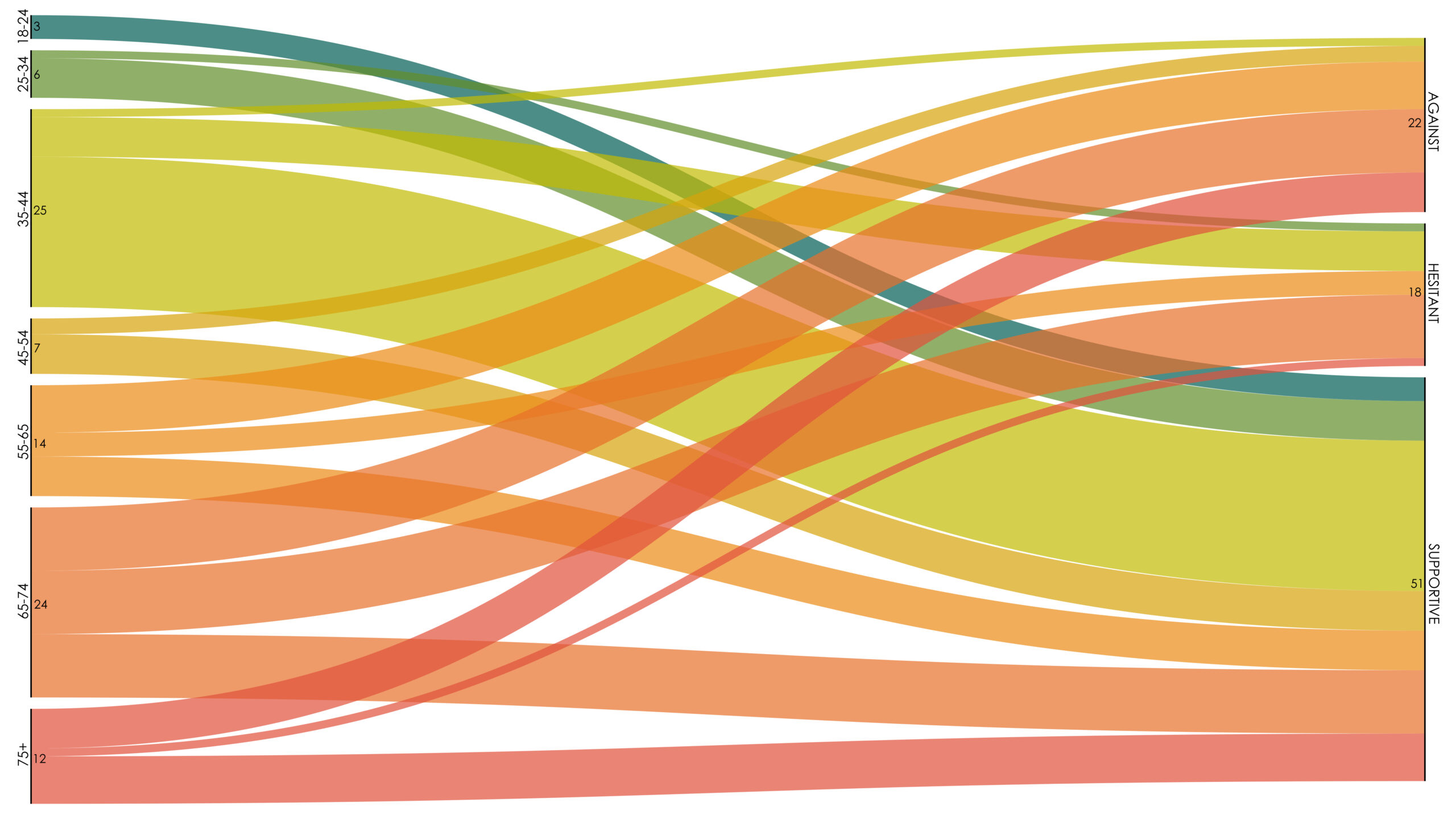
Strengths and Weaknesses of the Data:
As with any dataset, ours contains some strengths and weaknesses. Our survey was sent out through multiple mediums, including through facebook groups, a newspaper, social media posts from relevant park authorities, signs posted around the park, and physical “intercepts” in the park (see methodology). There is a strength to having a broad reach when it comes to disseminating a survey, as in our case it allowed us to collect data from all kinds of people interested in the future of Thompson County Park, and enabled us to collect many responses.
Unfortunately, some groups remain underrepresented in our data, including people of color and those belonging to younger age cohorts. This may be because these groups are less likely to utilize the park or use the forums that we disseminated the survey through, or it may stem from a hesitancy from these groups to answer our survey. The survey was conducted through the months of February and March, which likely affected the demographics of park users. We attempted to make relevant signage accessible to English and Spanish speakers whenever possible, but did not include other languages in our outreach.
For more information, see methodology.
